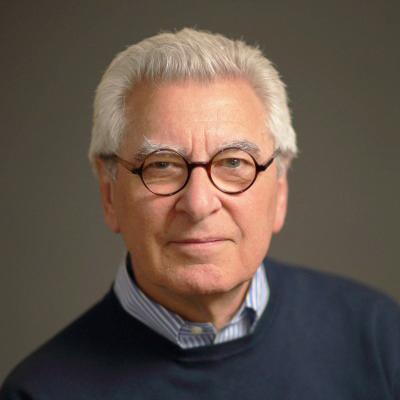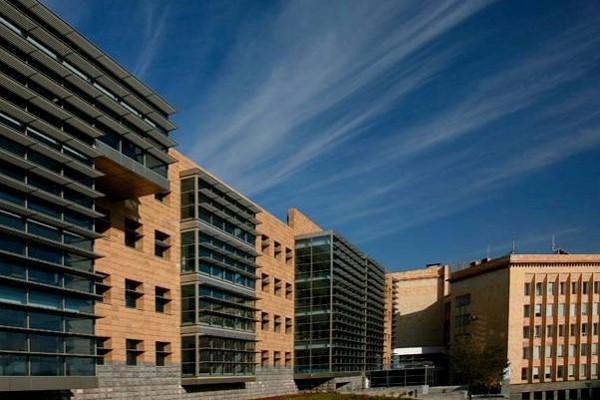Over a 50-year career, Ronald Altoon has led the design effort for mixed-use infill developments, new retail centers, transit oriented districts, adaptive reuse projects, and master plans. We sat down with him for a chat about his start in architecture, what you can learn from working in different countries, and what he thinks of developers.
JG: How did you start in architecture?
RA: I started by accident in High School counseling. They didn't know what to do with me. My counselor lived next door to someone at The University of Southern California’s architecture admissions office. I had no idea if the shoe fit, but had no other ideas. I graduated from USC with a Bachelors of Architecture.
I went to work for AC Martin after completing graduate school. I left after three years because no one was allowed to work overtime and as a young architect, you can't learn enough in 40 hours a week.
I began working for Frank Gehry because he knew my cousin. I averaged close to 70 hours a week for the 3 ½ years I was there. It was a great learning experience.
JG: Tell us about how you started your own firm
RA: I opened my own firm and after about three months, I was recruited to run design for a firm of 115 people with six offices. I thought this was a bit premature because I was just turning 30. As it turns out, I was a bit of a clay pigeon.
The guy that hired me quit after five and a half months to open his own firm. His goal in hiring me was I would screw up and the clients would go to him. But I didn't screw up. In fact, I built a very strong design department. They had only won one design award in their prior 45 years and won about 35 or 40 in the eight years I was there.
We became very profitable and I was offered the opportunity to acquire the Los Angeles office. The firm grew to 220 people, 120 of whom were in the LA office.
In that year, we tripled the profits of the firm. The owner approached us one day and said, "So how did that happen?" We said “We managed it on a daily basis, and it didn't just happen”. He said "Well okay, we have to renegotiate our deal." I asked “Why?” He said "It's because I never thought the firm could be so profitable. If I knew it could make that much money, I would have cut a better deal with someone else.” I walked out the door, with my wife seven and a half months pregnant, and started Altoon + Porter Architects with two other partners.
JG: What is the difference in process between different asset types, retail mixtures?
RA: I'll break it down this way-- office is the easiest building type. It's all decorating the box. Hospitality is fully programed. The hotel operator will give you a guidebook of their standards. You can try and improve them, but it's pretty much a roll out. Multi-family residential is market driven. Once you learn how to do it, it becomes second nature. The only problem is liability for condominiums. Retail is by far the most difficult building type because there are multiple moving pieces. You must create something beyond your competitor’s ability or it's not worth it. There are bankruptcies all the time in retail. With multifamily, you're leasing for a year and there is high turnover. But the demand is so high you'll lease it again. Retail is the only one that's fragile. It must not be disadvantaged by the physical structures on top of it. Start with the retail and add pieces that do the least damage.
JG: What was your favorite project?
RA: Asking me about my favorite project is like asking a parent who is their favorite child. But I have a favorite. It's a building called the American University of Armenia in the capital city of Yerevan. On December 7, 1988, an earthquake measuring 6.8 on the Richter scale, which is the same size as the Northridge earthquake, struck the central portion of the Soviet Republic of Armenia.
What made the project so memorable was the number of challenges. First, the university was founded on the same day the country was declared independent from the Soviet Union. It was located behind the former Iron Curtain, which means there are all the business, cultural, political and economic restrictions of Communism. It's 11 time zones away. There were language issues. There were building code challenges. They had a building code, but this was an American University that's affiliated with the University of California. So it had to comply with the State of California Building Codes. There was no local disabled access required there, but the state of California required it, so we had to do that. It was a tight budget, but we needed a building worthy of the University of California regulations. It was a building that had every possible challenge but was ultimately a success.
JA: What are the significant differences and similarities when developing in different countries?
RA: All 46 countries are different. There are some similarities. What I found, you couldn't show up with a Navy playbook and say this is how we do things. That's insulting, and it gets you nowhere. They're hiring you for your expertise but to be sensitive to who they are.
In Europe, the architects have an enormous amount of power. So, when the architect designs a building, an owner cannot change anything without the permission of the architect. It's their building. they’re just the investor. We decided we would work with those clients the way we worked with our clients in the United States. They loved it. And so we made friends there and built a practice.
We found that the Russians were willing to listen because they knew what they did not know. The guys that had the money to build knew that they couldn't do it themselves.
Our rule when we worked overseas was to require payment in advance. If you won't pay us in advance, I'll refer you to a worthy competitor and you can bankrupt them. You want to bring me halfway around the world, it's on my terms. End of conversation.
In Asia, it varies between countries. Japan, Singapore and Hong Kong are really sophisticated and have really good buildings. They usually want to keep you involved to whatever degree they contract with you. Usually less than you wanted, but they keep you that long.
Australia and New Zealand are very sophisticated. Very smart people, and nice to work with. They stop work at 5 o'clock. It's a pub culture. So no matter what, they'll be out drinking from five until two in the morning. But they'll be back in the office on time.
JG: Now please share your thoughts about developers.
RA: They fall into two categories- those that want your help and to learn from you; challenge you; and have you challenge them. And those that think they know better than anybody else because they pay. You have to ask questions in the Socratic method. What if you did that? Have you thought about that?
JG: Final words of wisdom?
RA: As long as the development community is open to embrace changes, some of which none of us are trained to understand and have to figure out together, then everything works out fine. But when developers have preconceptions and are closed to advice, they and everyone else will get burned. Your job is to keep them out of the fire.
Follow us on social media:








